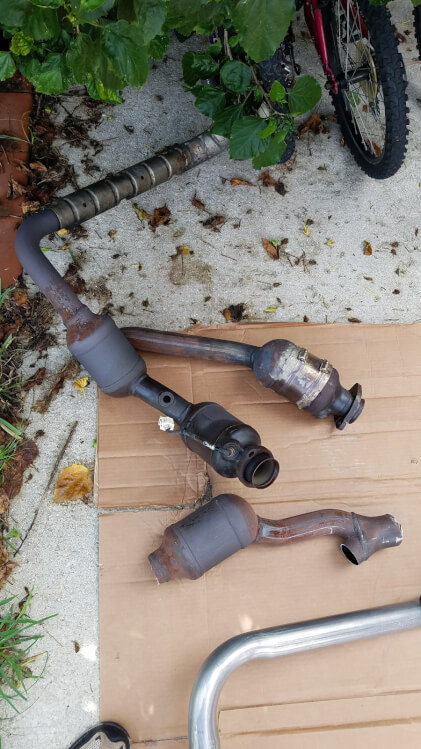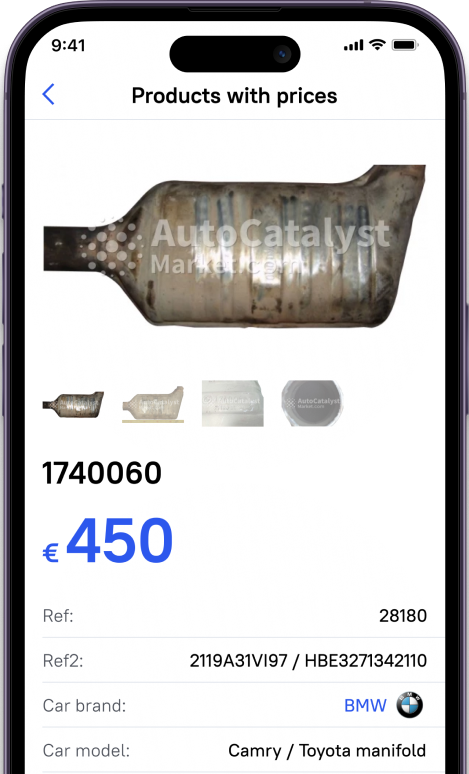- Signs of Catalytic Converter Problems:
- Ways to diagnose catalytic converter issues
- 1. VISUAL INSPECTION
- 2. COUNTER PRESSURE CHECK
- 3. DIAGNOSTICS BY MOTOR TESTER
- Common catalyst evaluation is as follows:
Since there are no moving parts on a catalytic converter, you would expect that they would be fairly durable and long-lasting. They are but, in spite of all the advancements in catalytic converter technology, they still fail. Many times, catalytic converter failure is a symptom of an issue somewhere else in the vehicle.
It is important that you fix the problem that caused damage to catalytic converter, because if you don't, that same problem will likely destroy the replacement converter as well.
Signs of Catalytic Converter Problems:
-
Power reduction and acceleration. If there is a problem with the exhaust system, this will begin to affect engine performance. You will not be able to accelerate as fast as with a healthy system. Simply put, the motor loses power, often it will also require replacing catalysts.
-
Rattling sound coming from beneath. A rattling sound coming from your car is never a good sign. When a catalytic converter becomes damaged, it can cause honeycomb break or collapse. When you turn on your vehicle, these pieces will vibrate and make a rattling sound.
-
Long way to start. Catalytic converter problems cause gas within your engine to heat up to the point that it actually ignites. This ignition is what causes the misfiring sensation. That can destroy engine components. Anytime your vehicle misfires, you should have it checked out for catalytic converter damage.
-
Reduced fuel efficiency. When your power and acceleration decrease, often fuel efficiency also decreases. With a faulty system, fuel consumption may be less profitable than before.
-
Smell of burning from the engine compartment. If a malfunction occurs, a gas leak may be observed. Due to high temperatures, surrounding parts may melt. When drivers smell fused plastic or burning they should immediately stop the car, remove all passengers from the passenger compartment, and then carefully check what is happening under the hood.
-
Gas smell. If you smell gas inside, this may be a sign of problems with catalytic converter. This usually happens when one of the exhaust pipes or pipes is damaged and begins to flow. Gasoline vapors exit through the crack. Sometimes this leak may be located inside.
Ways to diagnose catalytic converter issues
These are just a few common signs to understand if the catalytic converter is damaged. If you notice at least one of them or it seems that something is wrong with the catalyst, try to find out the reason with the help of several tests. The driver can diagnose the catalyst malfunction independently, if he has the proper knowledge and necessary equipment. There are 3 main ways to test the catalyst:
1. VISUAL INSPECTION
Presence of problems in the catalyst can be determined “by eye”. If it is deformed, there is a good chance that honeycombs of the catalytic converter are damaged. At the same time, it will not be possible to inspect the device from the outside for clogging with dirt and combustion products. That is why, it will be necessary to remove the catalyst. After removing the catalytic converter, it is necessary to inspect it for the presence of gaps. Clogged catalyst can be cleaned or replaced with a new one.
2. COUNTER PRESSURE CHECK
The most common method for checking a catalyst that does not require dismantling. Essence of a back pressure test is that the exhaust pressure is measured, which is then compared with ideal indicators. To diagnose it, you will need a manometer and adapter to connect it. It is better to lift the car or drive it into a pit. Next, you need to remove the first oxygen sensor, and connect a pressure gauge in its place.
3. DIAGNOSTICS BY MOTOR TESTER
The motor tester is a set of equipment that allows you to determine the state of many parameters. With this method of verification, a diagnostic device is installed instead of the spark plug, after which the engine starts and waveforms are taken. On their basis, experts make conclusions about the state of a catalyst. By eliminating problems with the catalyst in time, you can avoid costly engine repairs and significantly reduce fuel consumption.
In case it is heavily damaged and has to be replaced, contact specialized companies to get a payback for your old catalytic converter.
Common catalyst evaluation is as follows:
-
Fixing the cost of the catalytic converter is determined by the marking on the housing.
-
Establishing value of precious materials.
-
Acceptance of all kinds and types of catalytic converters. The cost also depends on the condition and integrity.
Damaged catalyst with ceramic part of the monolith should not be washed with any chemical solutions. It has to be clean without natural moisture, asbestos. Ceramics in metal housings of a catalytic converter has to be also clean and in full size.
The high cost of catalysts is due to the use of platinum, rhodium or palladium salts. Specialized companies purchase broken, defective, renewed and destroyed catalytic converters of all types, and also accept them for useful components with an aim to subsequent manufacture of new catalysts.









































